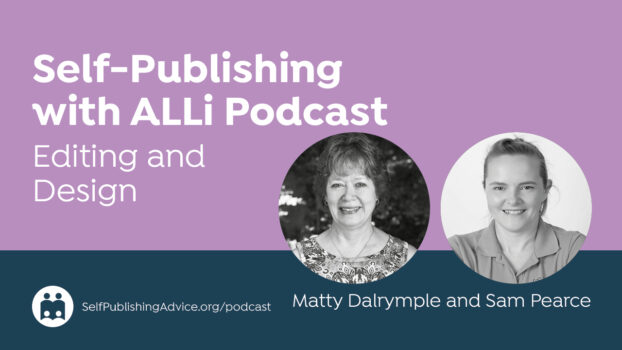The self-published British sci-fi novelist Simon Denman has drawn on his own experience from launching his bestselling sci-fi novel “Connected” to deduce valuable advice how to harness and benefit from the algorithms used by Amazon and other influential sites to determine your book's visibility and sales reach.
Most authors I know enjoy marketing about as much as filing tax returns. And while time spent on the former ought to increase time spent on the latter (in a good way), the correlation isn't always obvious. As the 19th century merchant, John Wanamaker, famously quipped, “Half the money I spend on advertising is wasted; the trouble is I don't know which half.”
For authors, there is a bewildering array of promotional opportunities available and little agreement on which work and which don't. The problem is compounded by the fact that few of us ever try things in isolation, since whatever tactics we employ, we generally want to do everything we can to maximise their success.
The Mysteries of Bookbub
There is one ad service however, which often gets singled out as reliably effective, at least in the US, and that is Bookbub. In just two years, this company has acquired an email list reported to contain over two million readers in the USA, large numbers of which seem to buy books. (Bookbub has also just arrived in the UK.)
As a result, they can afford to be both very selective and very expensive, although as a periodic advertiser with them myself, I can confirm that providing you time it right, the expense is usually repaid at least twice over in sales.
For me however, the interesting thing about Bookbub, is not the fact that it does work, but why?
At first glance we might assume that the full 15,000 additional free downloads or the 1,500 incremental 99p sales we got from running the ad, all came from their subscribers, but this is unlikely, since it ignores the contribution from Amazon's algorithms!
Amazon's Algorithms
Amazon's algorithms determine how often your book is shown to all their other customers, and although details are never divulged, analysis of my own results as well as those of other authors (particular thanks to Wayne Stinnett on Kboards forum here), reveals the following:
To engage the algorithms usually requires a catalyst beyond simply running free or discount promos, so a Kindle Countdown with no external promotion may not be enough.
- External ads only need to drive above average sales volume over a short time-frame.
- The algorithms reward upward trends but drop all others – so if your 3-day promo peaks on day 2, the momentum can disappear overnight.
- The faster the climb, the more the algorithms will boost that climb.
- The higher the pre-promo starting rank, the greater the subsequent boost and the longer it lasts.
Top Tips for Managing Algorithms
So for best results:
- Think of book promotions only as catalysts to engage Amazon's algorithms.
- Schedule free or discount promotions and use ads only to promote those promos – never the book by itself.
- Schedule your ads and other promotional activities in the order of smallest to greatest reach. So if you're using Bookbub, make sure their ad runs on the very last day.
Influencing these algorithms is like moving something large and heavy. One person can shift it a little, multiple people can move it more, and an elephant will move it a lot. But this doesn't mean that elephants are the only solution.
In book promotion, Bookbub is currently an elephant you can use, if and when it allows you (every six months). Thankfully, for the rest of the year there are dozens of other catalysts such as Readers in the Know*, EreaderNewsToday, Pixel of Ink, and FreeBooksy, to name just a few, which, if properly combined and synchronised, can get your sales moving just as effectively, and for a fraction of the cost.
* Readers in the Know is a service devised and launched by Simon Denman earlier this year.
JOIN THE CONVERSATION
Have any of Simon's top tips here worked for you? Do you have other advice on this top to share? Please feel free to join our conversation via the comments box.
How to sell more books by harnessing Amazon's algorithms by @SimonDenman via @IndieAuthorALLi: https://selfpublishingadvice.org/algorithms/”









[…] how the system works. This post looks inside on-line retailers’ systems to show you how to get better results from your book […]
Don’t understand why a promo for one day on bookbub.com should be run on the last day of a 7-day $.99 Kindle Countdown bargain.
After the last day, the Countdown deal is not available.
Seems a bookbub ad on the first day of a Countdown would be best.
Explain ?
Sorry Henry, only just saw this comment.
The reason is that based on our observations, if you give a promo a huge boost on day one and then lesser boosts on the days that follow, Amazon’s algorithms will write it off as a one-off spike rather than a trend that’s gaining momentum. I’ve personally had this happen with a Free promo I ran about a year ago. The first day yielded the largest number of downloads I’d ever recorded in a single day (about 22000 if I remember correctly), but the post_promo sales barely covered the cost of that first BB ad.
Thanks, Simon.
a grate article foe better rank within 7 days connect us skype:azad_1971
Yes, but….
and
it’s a big BUT.
Bookbub bars a writer until they have a large number of reviews -is it 20 or 25 5 star ones, Simnon?
So do a lot of other sites which do the same thing. Until a writer has the reviews and the star rating average that writer is blocked form advertising where it sells most!
Hi pdr,
Yes, I’m not sure if it’s a hard and fast rule on the number of reviews, but they certainly only pick books they expect to do well, and books with 20 or more reviews sell better than books without. And of course this contributes to their success. It’s a bit like the way selective schools can often boast better exam results – because they only admit the smarter kids in the first place 🙂
But the point of this article was not that BB is the only way to go – quite the opposite in fact.
Maybe this didn’t come across as I had to cut it to under 600 words, but the point is that when you understand why BB works, you can go some way to recreating the same effect by combining multiple promos with different sites.
If you want to shift a Piano, you don’t try each of your neighbours separately to see if they can do it by themselves, you ask a whole bunch to help you all at once. And this is what we need to do with book promotions as well.
That’s simply not true. BookBub has no requisite number of reviews, five star or otherwise. I applied in early July with a book that was published just five weeks earlier, on 5/30. It was accepted with only seven reviews and five were self identified beta readers. It ran on 8/12, and sold 2,645 copies at $.99. My best BookBub promo yet.
[…] recently read an article called How to Reach More Readers by Harnessing Retailers’ Algorithms by Simon Denman. I think the opening that caught my eye was the line Most authors I know enjoy […]
Many thanks, Simon. This is an eye-opener.
Thanks for the thought-provoking post! 🙂
Hi Karen,
Yes, I’m not sure about the demographics of Bookbub’s mailing list, although another author recently said she thought that middle-aged women were particularly well represented, in which case I would have thought children’s books might do quite well.
By comparison, on Readers in the Know we show how our membership is split here:
http://www.readersintheknow.com/stats
Incidentally, do you find your children’s books sell well on Kindle on Paperback. As a parent myself, I can’t really imagine reading Kindle books to my twin toddlers. It’s one of the very few instances where I prefer paper over Kindle 🙂
Very insightful! Thank you, Simon.
Unfortunately having taken a look Bookbub doesn’t feel the right place to promote children’s books – but understanding the principles of the effect of these sorts of campaigns on Amazon’s algorithms is very useful.